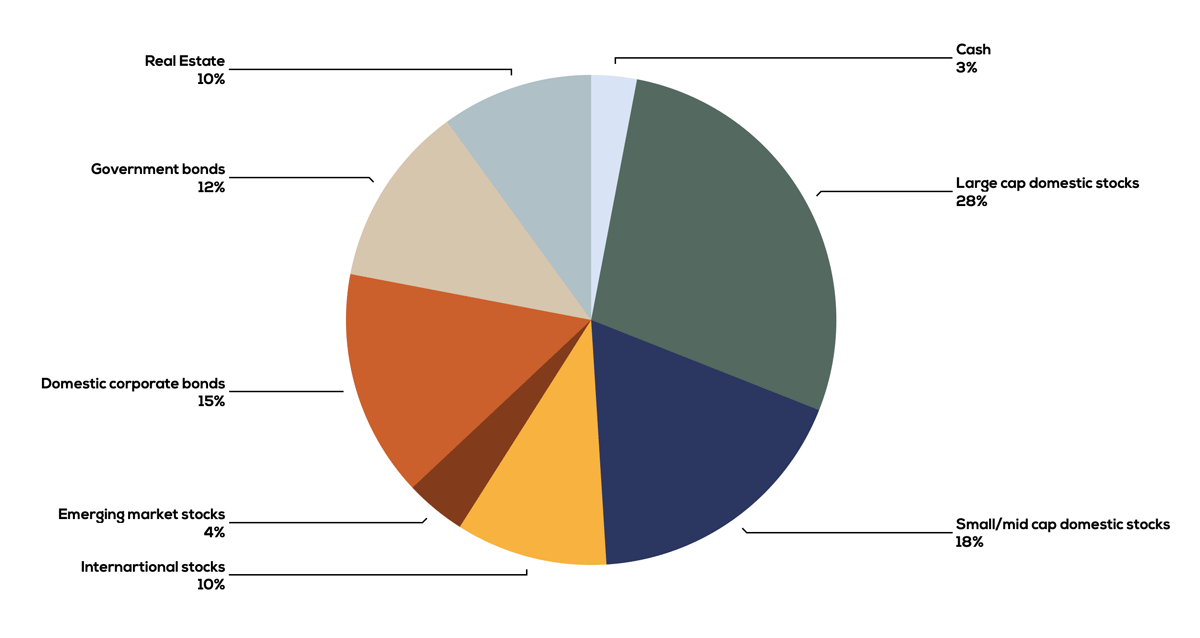
This article is written by
David Pelster
Amber River Chancery
Find out more about David and his London-based team
Diversification is a phrase that comes up a lot when talking about savings and investment. Put simply, it’s a way to manage your investment risk by investing in lots of different things rather than putting all your eggs in one basket.
It’s a strategy that helps to manage risk by investing in vehicles that span different financial instruments, industries, and other categories. By investing in different kinds of assets in your portfolio, you’re essentially aiming to neutralise the impact of poor fund performance by offsetting it against the positive performance of other funds.
Creating a diversified portfolio is complicated and comes with an obvious drawback; you may be reducing your potential short-term gains and quick wins. But you will be doing so in exchange for greater stability and security and that’s attractive to those who are less adventurous when it comes to investing.
Invest in lots of different things rather than putting all your eggs in one basket
Risks you can’t avoid
While diversification is a valuable and effective risk management strategy, some risks are impossible to avoid. These are called systemic or market risks. Here’s a brief explanation of the two main types of risk.
- Systemic risk. By and large, this will be outside of the control of any individual company or industry. Systemic or market risk is commonly attributed to inflation rates, exchange rates, political instability, war, and interest rates. Diversification is unlikely to reduce or eliminate systemic risk, and it is a factor all investors must accept.
- Unsystemic risk. This is the type of risk you can manage. It follows the fortunes of an individual company, industry, market, economy or country. By investing in a range of assets that won’t all be affected by market events in the same way, you can reduce your exposure through diversification.
Diversification helps mitigate the risks but won't remove them entirely
Types of investment
Most fund managers and advisers diversify investments across asset classes and determine what percentage of the portfolio to allocate to each. Such asset classes include:
- Equities – these are shares or stocks in a publicly-traded company.
- Fixed-interest securities – also known as bonds, these represent a loan made by an investor to companies or states.
- Real estate – this includes buildings, land, natural resources, agriculture, livestock and water or mineral deposits.
- Commodities – these are basic goods necessary for the production of other products or services.
- Cash and short-term cash equivalents – this includes savings, cash ISAs, savings bonds and premium bonds.
Make sure you understand and are comfortable with the risks
Creating a diversified portfolio through asset allocation
Here’s an example of a portfolio with a diversified asset allocation:

Source: Cary Stamps & Co.
A good financial planner will advise you on how much risk you should be exposing yourself to
How do you decide your asset allocation?
A good financial planner will take the time to get to know you so that they can advise you on how much risk you should be exposing yourself to and how you should therefore structure your asset allocation and portfolio.
As a rule of thumb, the older you are, the less comfortable you’ll be taking risks with your money. After all, you may need to start taking an income to support your preferred lifestyle. However, if you are younger, you may be comfortable taking a higher level of risk as you have more time to allow markets (and therefore your investments), to recover from any downturns. You just need to make sure you understand the risks and are comfortable taking them.
Finally, remember that the value of investments, and any income you take from them, can fall as well as rise, and you may get back less than you invested. Diversification helps mitigate the risks but won’t remove them entirely.
Get in touch
To speak to one of our team, arrange an appointment or find out more, call 0800 915 0000, or alternatively use our contact form here.
Disclaimer
The information within this article was correct at the time of publishing, but laws and tax rules are subject to change. Your circumstances and where you live in the UK may also have an impact on your tax treatment.
To learn about the government’s most recently-announced changes, please read our latest budget roundup: 2024 Autumn Budget Update
Related Posts
24 February 2025
Read More

6 January 2025
Read More

12 April 2024
Read More

5 February 2023
Read More

2 September 2022
Read More

2 September 2022
Read More

